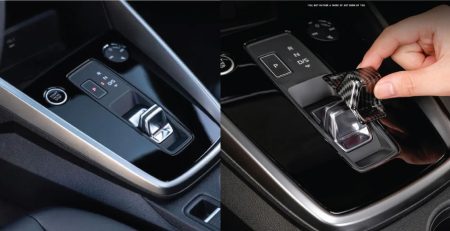Have You Ever Wondered What An Airhorn is? Find Out Below!
Airhorns are commonly found on trains, large semi trucks and fire engines, pneumatic air horns use pressurized air to create loud, no-nonsense warning blasts that signify you mean serious business.
We’ll look at how air horns work in this column and look at a few that can be installed on your own vehicle. Depending on the administration, these air horns can be easily installed under the hood or on the roof. Once fitted, the same sound level found on the big rigs will be created. How does an Air Horn work?
Air horns vibrate a diaphragm in a compression chamber using pressurized air. This chamber is kept under pressure to ensure immediate horn sounds. When triggered by a switch or button, a valve exposes the air from the compression chamber to the horn base. (commonly known as the “throat”).
Once the air leaves the compression chamber, the diaphragm starts to vibrate and sound waves are produced at high pressure. These sound waves are amplified as they pass from the narrow horn throat to the wide, flared horn mouth.
The Kleinn Sealed Air Compressor
Air horn setups usually contain multiple sound-emitting horn pieces. Since these pieces are trumpet-shaped, we’ll just call them “trumpets.” The kits we offer, for example, contain 1 to 5 trumpets. Most also have a small air compressor. On this product page, this detail will be noted.
If You Have A 2009 Honda Civic, I'm sure You Would NEED a BRAND NEW Shifter after all these years! Click on the product image below to purchase immediately!
What is an Air Tank?
Air tanks store a large volume of pressurized air, which is essential for the development of a deeper, stronger horn explosion found on heavier-duty kits such as train horns and some truck horns. These kits typically include an air tank-but we offer a variety of stand-alone compressors, air tanks and more if you need to buy one individually.
Measurements of Sound
Loudness and pitch are the sound of an air horn’s most important elements. Whenever possible, we have included in the product pages or product options a short audio sample of each horn – indicated by a “Sound” click button.
Loudness
You will also see a decibel (dB) rating on each of our product pages for how loud a particular horn is. Train and truck horns typically range from 110 to more than 150 decibels (db). The quietest sounds a human ear can detect from perspective are 10 dB. Conversely, in close proximity to 130 dB, sound begins to become painful.
Pitch
In hertz (Hz), the frequency of sound is measured. Higher-frequency sound wavelengths are more compressed and travel between each wave only a short distance. Low-frequency sound waves travel between each wave at a greater distance. Horns producing lower frequency waves have a deeper and more baritone lower pitch. The human ear can detect levels of pitch from 20Hz to 20.
Trumpet length generally affects the emitted sound wavelengths and pitch. Longer trumpets produce low-pitch sounds; while shorter trumpets produce high-pitch sounds (visualize the very short funnels used in baseball games on compressed air canisters). Air horn assemblies often feature multiple trumpets of different kinds to create a richer chorus of different lengths.
When determining the distance traveling by sound waves, volume has a much greater effect than pitch when traveling in unhindered air. However, low-frequency sounds are more effective in crossing solid barriers such as glass and walls. So if you’re in a car or building, it’s more likely that the sounds of a baritone train horn reach your ears than those produced by high-pitched air horn of the same volume.
Is it simple yet easy to install an Airhorn? Where do I receive instructions on how to perform the installation?
It’s actually easy to install an air horn. The manufacturer’s detailed instructions guide you through every step, from mounting to wiring to answer your second question. To show you an example, please click on the link or copy and paste in your browser below.
https://www.autoanything.com/car-horns/how-to-install-an-air-horn.aspx









